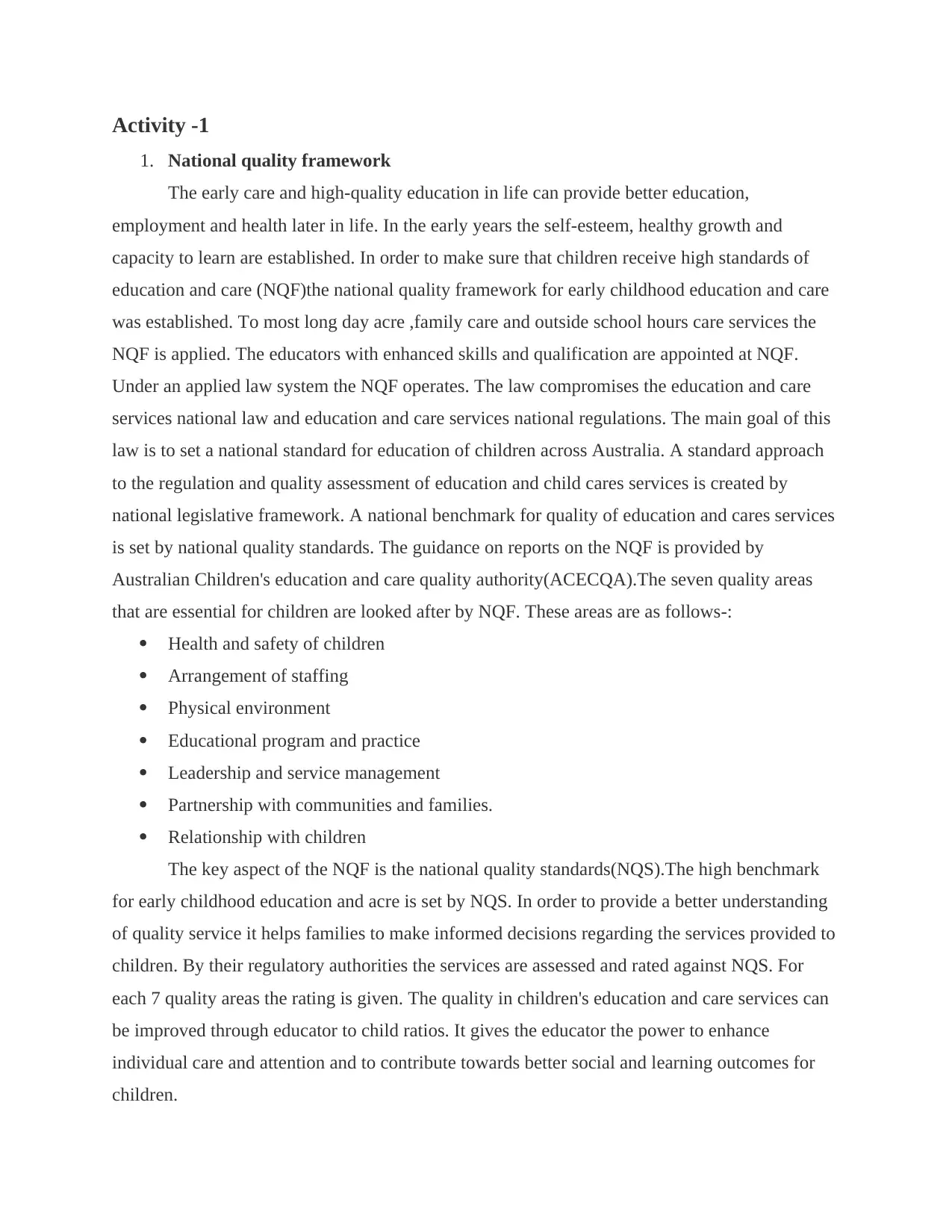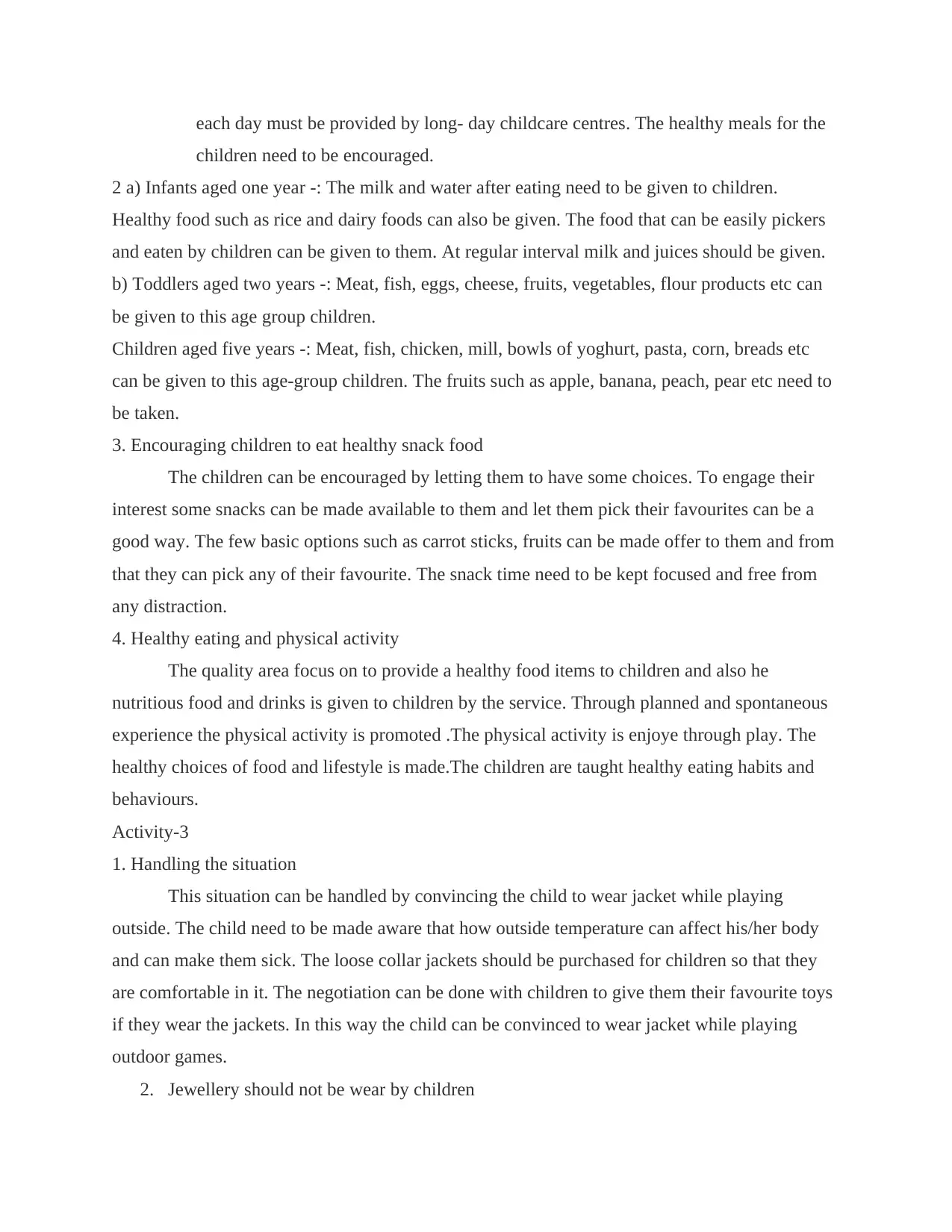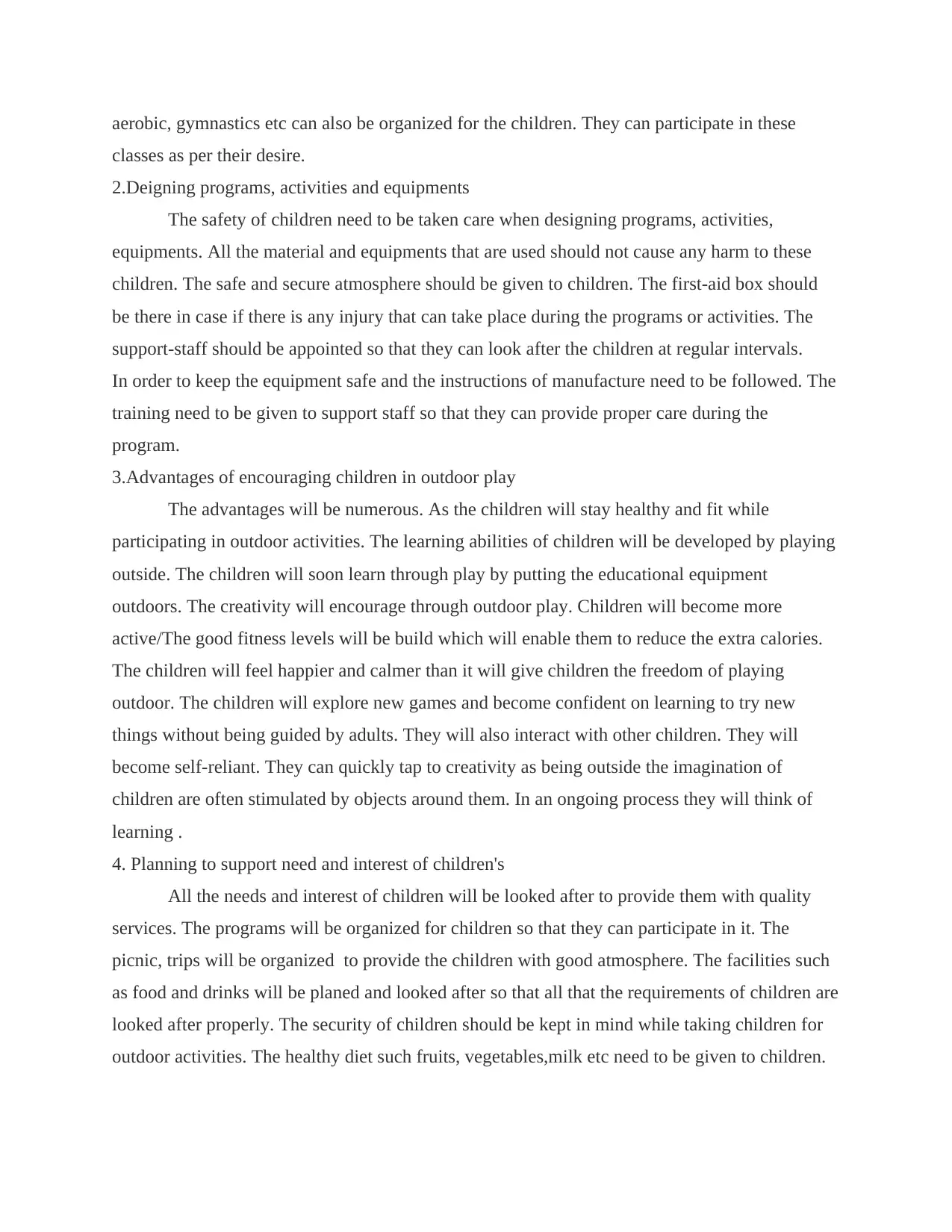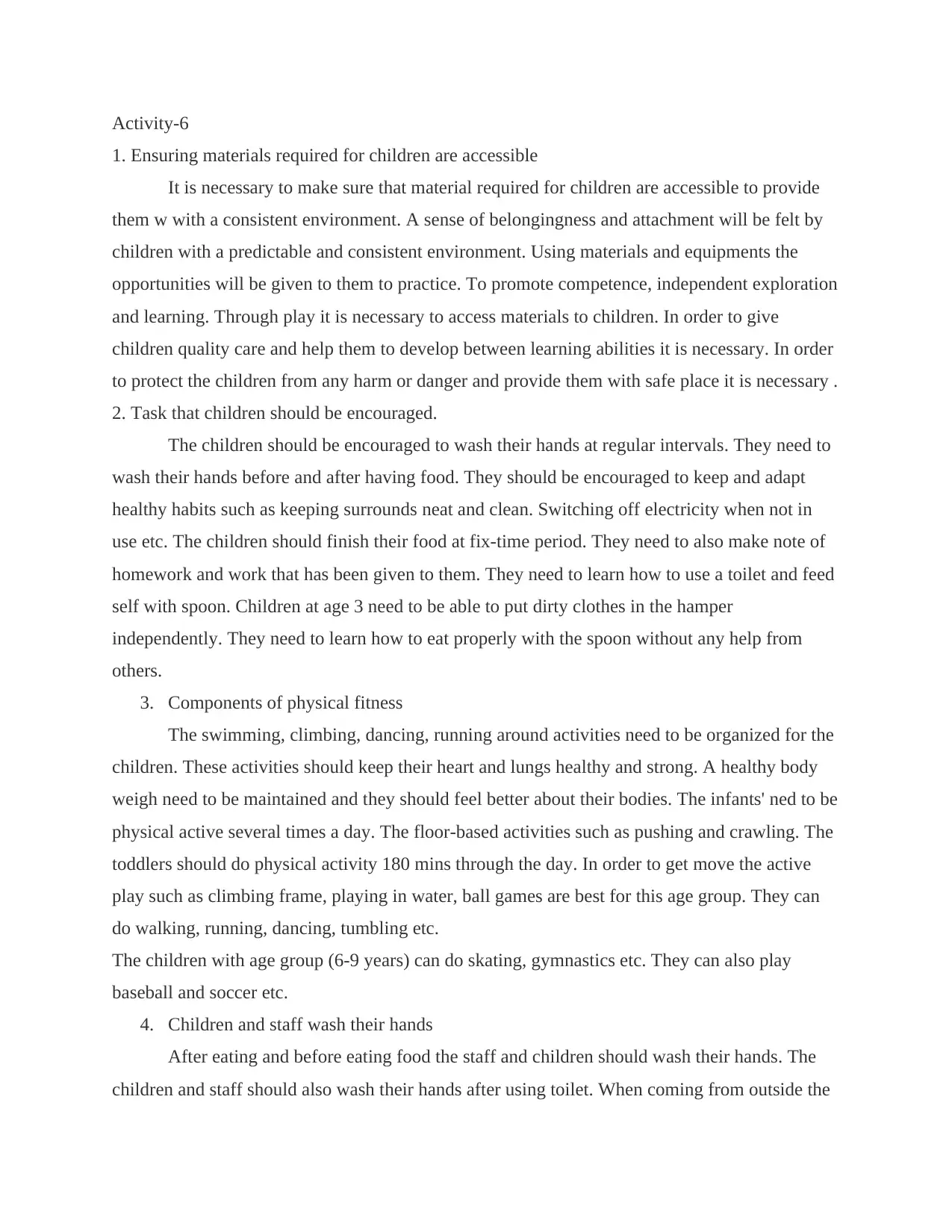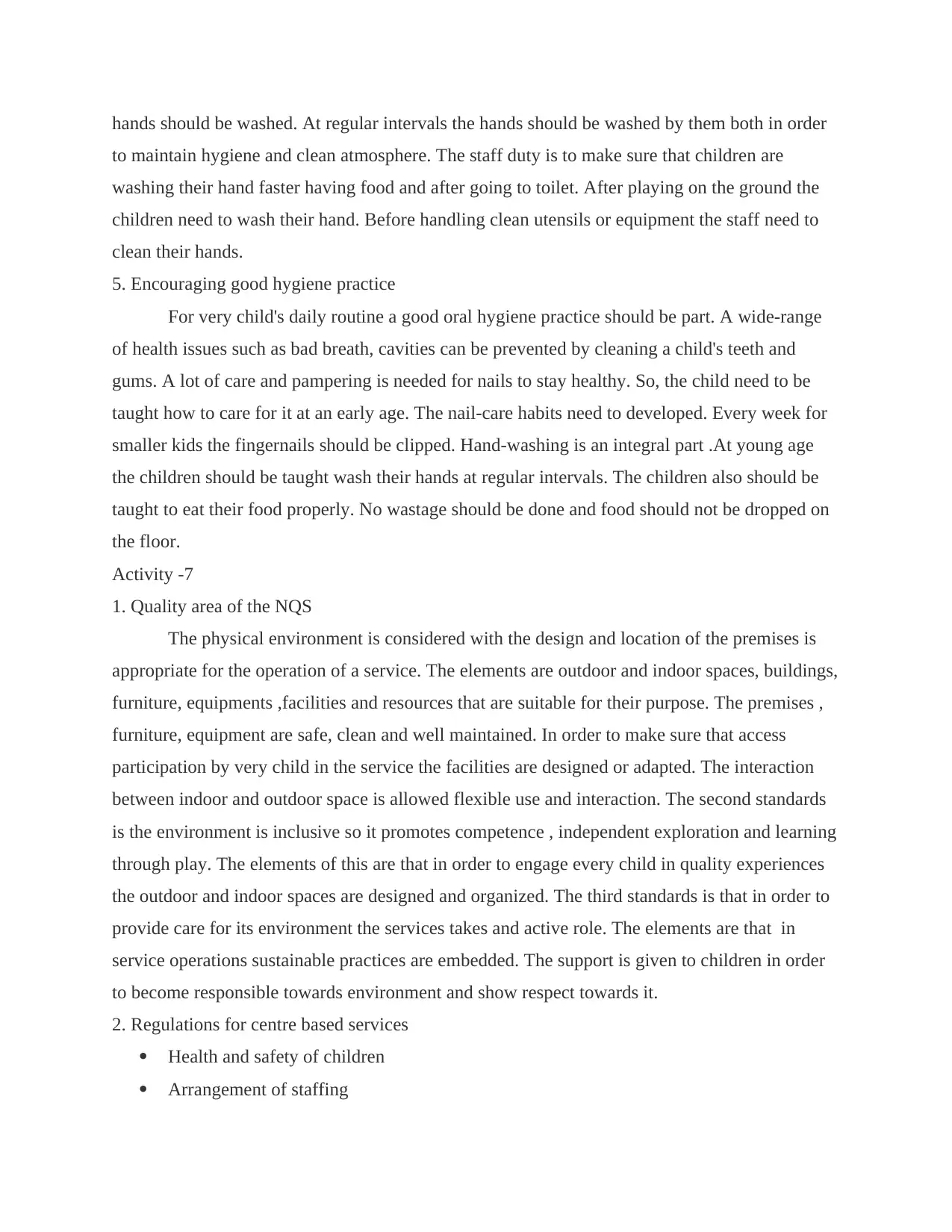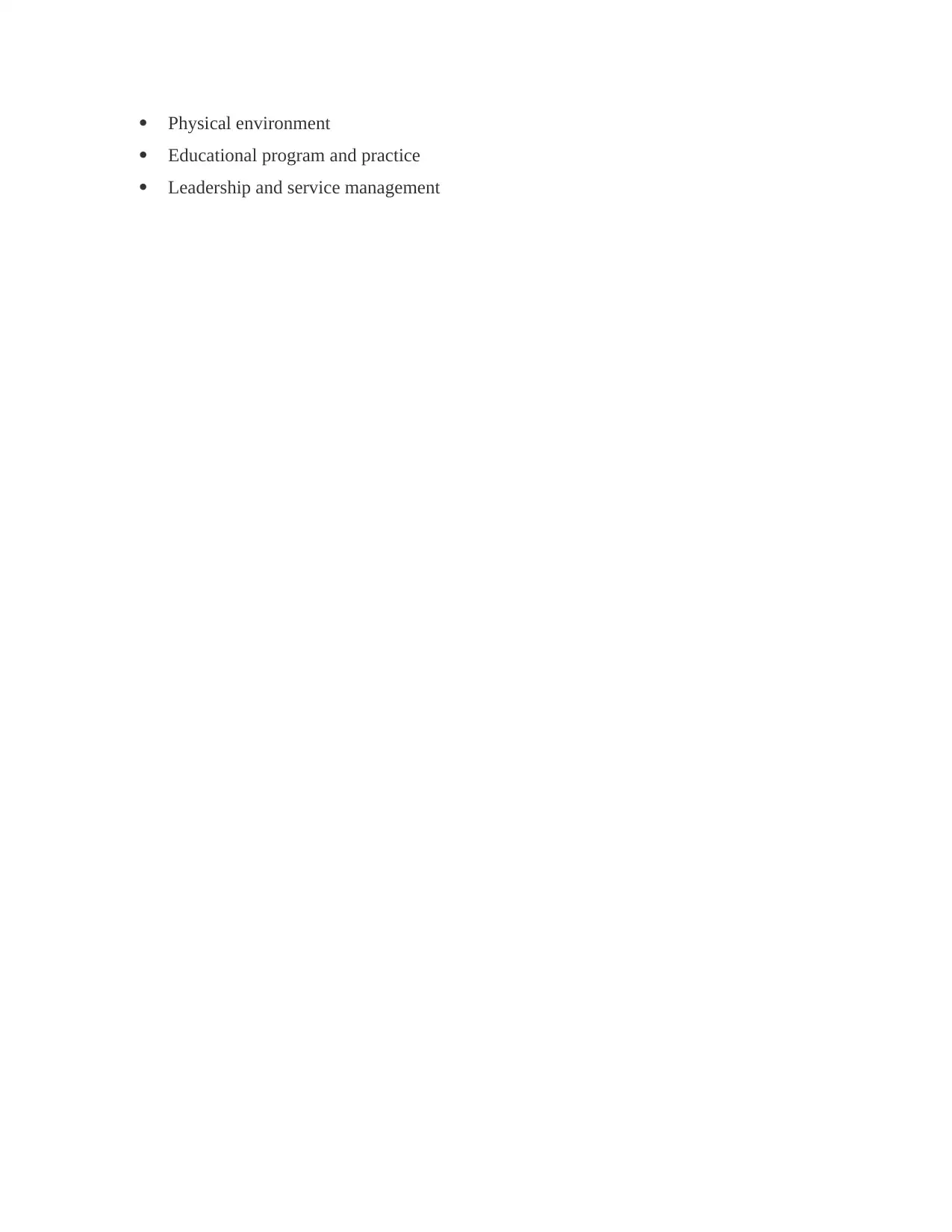The provided assignment is focused on two key aspects of early childhood education: the quality area of the National Quality Standard (NQS) and regulations for centre-based services. The first section delves into the quality area, highlighting the importance of a well-designed physical environment that promotes inclusivity, flexibility in use, and interaction between indoor and outdoor spaces. The second section focuses on regulations for centre-based services, covering essential aspects such as health and safety, staffing arrangements, physical environment, educational programs and practices, leadership, and service management. These regulations serve as guidelines for early childhood educators to ensure high-quality care and education for children.
![[object Object]](/_next/static/media/star-bottom.7253800d.svg)
![[object Object]](/_next/static/media/star-bottom.7253800d.svg)

